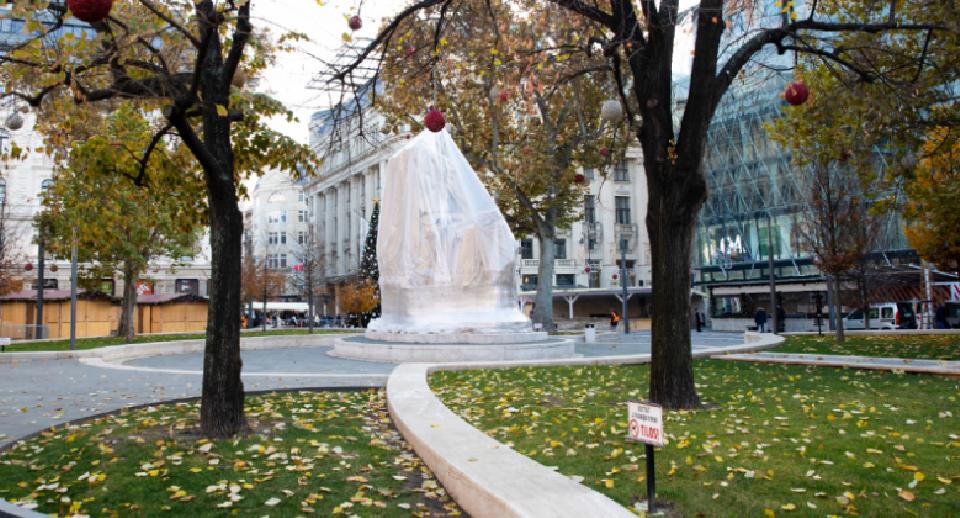Although the mayor proudly announced two years ago (!!) that a permanent solution had been found for the winter protection of the statue depicting the author of the Szózat, even now only a cheap and ugly solution was used.
The City Hall case is not the only one with Gergely Karácsony, in which there are a lot of question marks, something is not right near the Metropolitan Municipality, in Vörösmarty Square either. Several people indicated that although a pavilion made of steel sheets should stand above and around the Vörösmarty statue in the middle of the square,
however, like last year, the artwork was once again dressed in transparent nylon for the winter.
This is not only aesthetically ugly, but it also does no good for the composition, which was restored two years ago.
However, in the fall of 2019, after handing over the completely renovated square by the Belváros-Lipótváros Municipality, the then newly elected mayor proudly announced what a great solution they had found for the winter protection of the statue. In practice, this meant that instead of the nylon covering or tin-boarding used elsewhere, a uniquely designed pavilion was erected over the statue.
As the mayor put it: "Until now, the Vörösmarty statue on the square has received protection unworthy of the holiday and the capital during the winter period, but from now on, an innovative structure will protect the statue, which at the same time draws attention to our values."
Hello Wood Kft., the designer and builder of the pavilion, with which the Budapest Festival and Tourism Center (BFTK) Nonprofit Kft., owned by the capital city, signed a contract for the project,
undertook the construction for almost forty million forints.
According to the company's information at the time, a conservation and presentation pavilion was designed and built for the Vörösmarty monument, which protects the group of sculptures made of Carrara marble from the elements of the winter weather. The elements of the ten-meter-high steel pavilion with a sacred atmosphere can be taken apart at the end of winter and then reassembled the following year.
However, the structure only "guarded the statue" for one winter, it was not built last year, nor this year. However, as the nullahategy.hu article quoting the restoration plan reveals, nylon coating is not a good solution either, because due to temperature fluctuations, condensation forms under the foil, which can lead to the settlement of microbes harmful to the statue. On the other hand, water that accumulates and freezes at the place of condensation can also damage the sculpture.
Of course, we tried to find out from the Capital why this solution was used, why doesn't the pavilion protect the statue? This is an important question if only because, according to the public procurement notice that can also be found on the Internet, the contract for the pavilion, dated October 30, 2019, was extended last April until May 15, 2021.
However, the Metropolitan Municipality has not yet responded to our questions.
Although the work of art represents a serious value, its protection should be of fundamental importance. The joint creation of the sculptors Ede Kallós and Ede Telcs was inaugurated in May 1908, the pedestal of the statue consists of 23 limestone blocks, while the statue group itself consists of 21 marble blocks. Before 2019, it was last restored in 1998.
Source: Mandarin
Picture: Márton Ficsor












